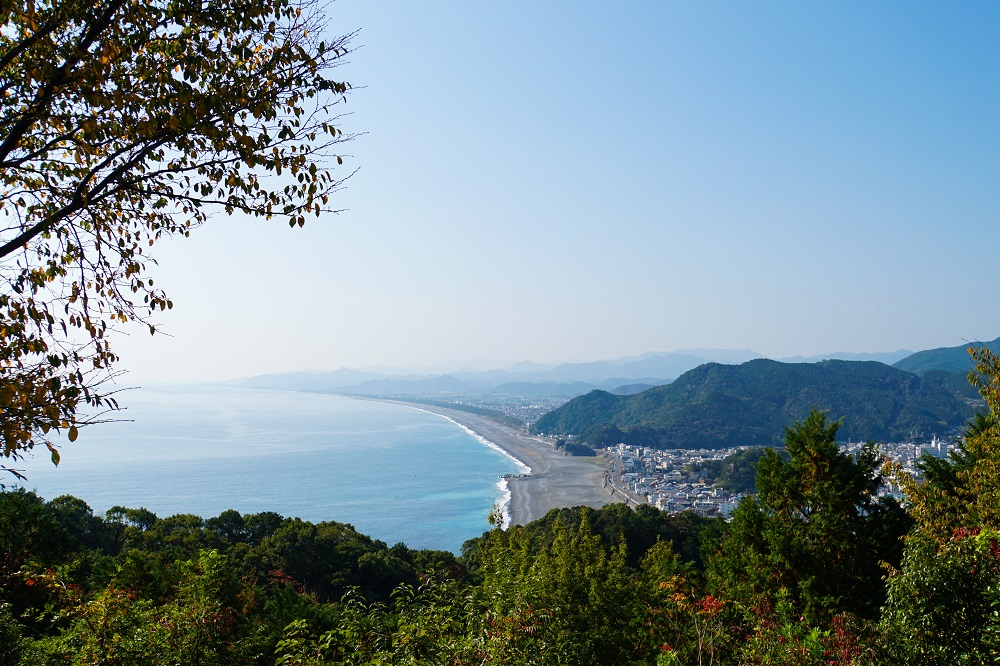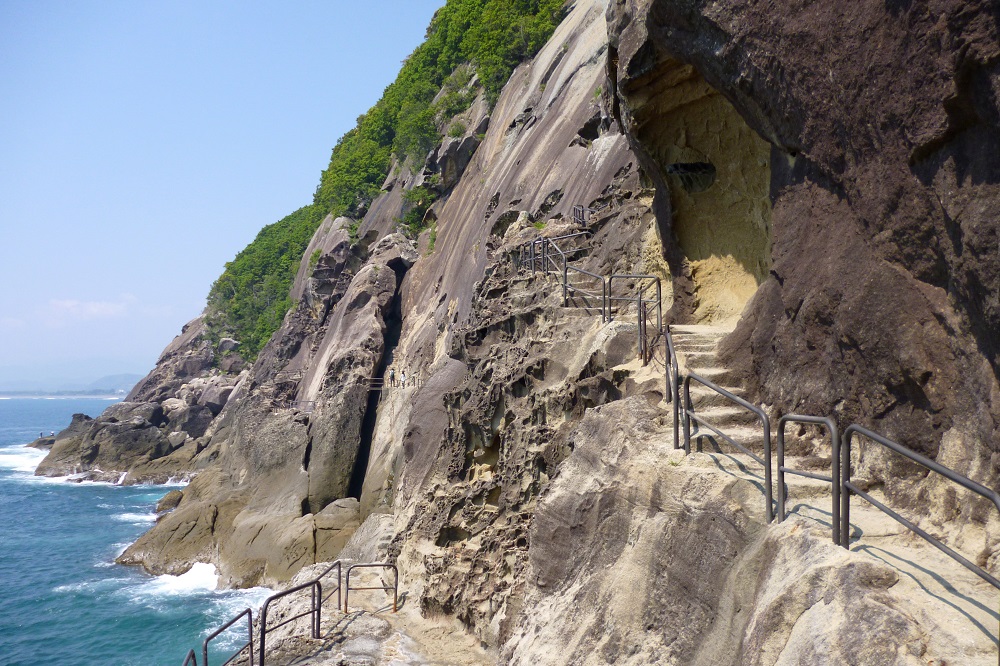Kumano Kodo / 熊野古道 (Mie)
About Kumano Kodo
The Kii Mountain Range is home to the three sacred sites of Kumano Sanzan (Three Kumano Shrines), Koyasan (Mt. Koya), and Yoshino-and-Omine, which have nurtured various forms of faith, including Shinto, which is rooted in reverence for nature; Buddhism, which was introduced from China; and Shugendo, which combines the two.
In 2004, UNESCO registered the “Sacred Sites and Pilgrimage Routes in the Kii Mountain Range” as a World Heritage Site, recognizing as a common property of humankind the three sacred sites, the pilgrimage routes connecting them, and the cultural landscape formed over the ages by natural and human activity.

“Kumano Sanzan" is the collective name for the three shrines of Kumano Hongu Taisha, Kumano Hayatama Taisha, and Kumano Nachi Taisha. The Kumano Kodo Iseji Route is a "road of prayer" that people took as they traveled from Ise Jingu Shrine, a special place for the Japanese people, to pay homage to the Kumano sanzan, going through a number of steep mountain passes along the way. There is an old saying that goes, “Seven times to Ise, three to Kumano,” characterizing how strong the draw to these special places was. Even today, the Kumano Kodo Iseji Route is vibrant with its scenery, history, and culture.

Getting there and around
Train
From Nagoya Station take the JR Nanki Limited Express to Kumanoshi Station (approx. 3 hrs. 10 min.)
From Tsuruhashi Station in Osaka take the Kintetsu Limited Express to Matsusaka Station (approx. 90 min.)
At Matsusaka Station transfer to the JR Nanki Limited Express to Kumanoshi Station (approx. 2 hrs.)
From Kumanoshi Station to Kumano Kodo Matsumoto Pass: approx. 1 km
Recommendations
World Heritage "Sacred Sites and Pilgrimage Routes in the Kii Mountain Range" / 世界遺産「紀伊山地の霊場と参詣道」
In 2004, the “Sacred Sites and Pilgrimage Routes in the Kii Mountain Range” including Kumano Kodo were registered as a World Heritage Site. The Kumano Kodo is a route that connects Ise, Osaka and Kyoto with the Kumano region in the southern Kii Peninsula. Also called the Kumano Michi (Kumano Road) or Kumano Kaido (Kumano Highway) in the old days, the Sacred Sites and Pilgrimage Routes in the Kii Mountain Range consists of the three sacred sites of Kumano Sanzan, Yoshino-and-Omine, and Koyasan, along with the routes connecting them, namely the Kumano Kodo, Omine Okugakemichi, and Koyasan Choishi-michi. It is a heritage that extends across Mie, Nara, and Wakayama Prefectures.

Kumano Kodo Iseji Route/熊野古道 伊勢路
The Iseji Route, which runs southward through the eastern part of the Kii Peninsula, connects Ise Jingu Shrine with Kumano Sanzan. It is a road of faith, deeply associated with the old saying that goes, “Seven times to Ise, three to Kumano.” Since the Edo Period (1600/1603-1868), pilgrims who had visited Ise would take the Iseji Route to continue on their journeys of faith to Kumano. In addition to its characteristic stone pavements and bamboo forests, travelers along the Kumano Kodo can enjoy a wide variety of scenery, such as the route overlooking the Kumano Sea from a mountain pass, the route overlooking the terraced rice paddies said to be the best in Japan, and a pilgrimage route along the Kumano River.

Kumano Sanzan (Kumano Hongu Taisha, Kumano Hayatama Taisha, Kumano Nachi Taisha)/熊野三山(熊野本宮大社、熊野速玉大社、熊野那智大社)
The Kumano Hayatama Taisha shrine is also called "Niimiya," meaning “new shrine.” Its original shrine is the Kamikura Shrine, which is said to be the sacred place where the deity Kumano Gongen, who is enshrined in Kumano Sanzan, descended to the earth. Ketsumimiko-no-Okami is the main deity of Kumano Hongu Taisha. Kumano Hayatama-no-Okami and Kumano Fusumi-no-Okami are the main deities of Kumano Hayatama Taisha shrine. The three deities of Ketsumimiko-no-Okami, Kumano Hayatama-no-Okami, and Kumano Fusumi-no-Okami are called the Kumano Sansho Gongen, meaning the Three Avatars of Kumano. The shrines of Kumano Sanzan maintain a relationship of solidarity with each other by mutually worshiping their respective chief deities.

Yoshino Kumano National Park/吉野熊野国立公園
Occupying a large area in southern Mie Prefecture, Yoshino Kumano National Park has been registered as a UNESCO Biosphere Reserve (commonly called Eco Parks). In the mountainous northern part of the park you can find the Osugi Valley, which is widely considered to be one of the top three gorges in Japan. The Kumano River in the south is known as a river pilgrimage route. One way of enjoying the river is to imagine the pilgrims who once traveled along its banks. With its huge and curiously shaped rock formations and cliffs, Dorokyo is also a popular place to visit for its scenery and activities. In addition, the coastline of the Kumano Sea is not to be missed. Featuring Tategasaki with its towering cliffs and Shichiri-Mihama Beach which stretches far out into the distance, the Kumano Sea offers a series of photogenic spots where visitors can not only enjoy the scenery created by nature but also become intrigued by the history associated with the area.

Kumano Kodo Iseji Route Matsumoto Pass/熊野古道伊勢路 松本峠道
Travelers entering the Matsumoto Pass surrounded by bamboo groves will be greeted by a life-size Jizo statue as they set foot upon the paths, most of which retain their cobblestone pavement. Once you have gone through the Matsumoto Pass, there are no more mountain passes until you get to the city of Shingu via the Hama-kaido Road. This is the place where pilgrims in the past would have reflected on Kumano Hayatama Taisha Shrine, which is located in Shingu, beyond Shichiri-Mihama Beach. From Onigajo you can take a boardwalk down to the Onigajo Center for a short route back to Odomari Station. (JR Kumanoshi Station - JR Odomari Station, distance: 4.1 km, walking time: approx. 1 hr. 45 min.)

Travel Recommendations
It is easy to get lost in the evening when it gets dark. The travel times shown are only a rough estimate that do not account for meals, taking breaks, etc. Try to leave early and walk with plenty of time to spare so that you can descend the mountain during daylight hours. There are no vending machines or shops along the way, so be sure to prepare drinks and packed lunches in advance.
